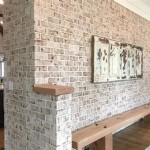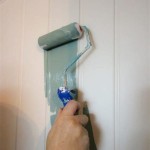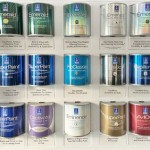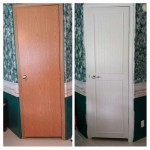How Much Does An Interior House Painter Cost?
Determining the cost of an interior house painting project can be a complex undertaking, as numerous factors influence the final price. Understanding these variables allows homeowners to budget appropriately and make informed decisions when selecting a painting contractor. The purpose of this article is to provide a comprehensive overview of the factors affecting interior painting costs and offer a general estimate of expected expenses.
Several elements contribute to the overall cost of an interior house painting project. These include the size of the area to be painted, the condition of the surfaces, the type of paint selected, the complexity of the job, geographical location, and the painter's labor rates. A thorough evaluation of these factors is necessary for accurate cost estimation.
Area Size and Surface Preparation
The area to be painted is a primary driver of cost. Larger spaces naturally require more paint and labor, increasing the overall expense. Painters typically provide estimates based on square footage, accounting for wall height and the number of rooms. However, the shape of the room and any architectural details that increase surface area, such as ornate trim or built-in shelving, can also affect the final calculation.
Surface preparation is another critical factor influencing the cost of interior painting. Prior to applying any paint, the surfaces must be clean, smooth, and free of imperfections. This may involve tasks such as washing walls to remove dirt and grime, patching holes and cracks with spackle or joint compound, sanding rough areas, and priming bare surfaces. The extent of surface preparation required directly impacts the labor time and materials needed, thereby affecting the overall cost. Walls with extensive damage, such as water stains, peeling paint, or significant cracks, will require more extensive preparation, leading to higher costs.
The presence of wallpaper necessitates either removal or priming before painting. Wallpaper removal is a labor-intensive process, often involving steaming or the use of chemical strippers to loosen the adhesive. Depending on the type of wallpaper and the condition of the underlying wall, this process can significantly add to the overall cost. Alternatively, if the existing wallpaper is in good condition and securely adhered, a specialized primer can be applied to create a smooth, paintable surface. However, this method may not be suitable for all types of wallpaper, and the suitability should be assessed by a professional painter.
Furthermore, the height of the walls influences the labor required. Higher walls necessitate the use of ladders or scaffolding, increasing the time and effort needed to paint the surfaces. This is particularly relevant in rooms with vaulted ceilings or two-story foyers, where specialized equipment and expertise may be required, impacting the cost accordingly.
The number of coats also influences cost. While some lighter colors might cover a pre-existing white or light base with a single coat, switching to a much darker or richer color typically necessitates at least two coats of paint for optimal coverage and color saturation. Additionally, some surfaces, such as those that are porous or have been previously painted with a high-gloss finish, may require additional coats of primer or paint to achieve a uniform and durable finish.
Paint Type and Quality
The type and quality of paint chosen also significantly impact the overall cost of the painting project. Paints vary widely in price, depending on their composition, durability, and specific features. Higher-quality paints typically offer better coverage, durability, and color retention, but they come at a higher price point. Conversely, lower-quality paints may require more coats to achieve the desired coverage and may be more prone to fading, chipping, or peeling over time, potentially leading to higher long-term costs.
Different paint finishes also impact the cost. Matte finishes are often used for walls and ceilings due to their ability to hide imperfections. Eggshell finishes are slightly more durable and easier to clean, making them suitable for hallways and living rooms. Satin finishes offer even greater durability and are often used in kitchens and bathrooms. Semi-gloss and high-gloss finishes are the most durable and easiest to clean, making them ideal for trim, doors, and other areas that are subject to frequent contact or moisture. The more durable the finish, the typically the higher the price.
Specialty paints, such as those formulated for bathrooms and kitchens to resist moisture and mildew, or those with low-VOC (volatile organic compounds) content for improved indoor air quality, also typically command a higher price. Low-VOC paints are increasingly popular due to growing awareness of the health and environmental impacts of traditional paints, which can release harmful chemicals into the air. While low-VOC paints may be more expensive upfront, they can contribute to a healthier living environment and reduce the risk of respiratory problems.
Primer selection impacts cost too. Primers are used to prepare surfaces for painting by sealing porous materials, improving paint adhesion, and blocking stains. Different types of primers are available for different surfaces and purposes, such as oil-based primers for blocking stains and water-based primers for general use. The choice of primer will depend on the specific requirements of the project and the condition of the surfaces to be painted. Additionally, tinted primers, which are tinted to match the topcoat color, can improve coverage and reduce the number of coats of paint required, potentially saving on labor and material costs.
Paint brands also contribute to varying costs. More established and reputable brands often come at a higher price point due to their proven track record of quality and performance. However, less well-known brands may offer comparable performance at a lower price. It is vital to compare the features, benefits, and reviews of different paint brands to make an informed decision. Painters will often have preferred paint brands that they are comfortable working with and that they know will provide a durable and aesthetically pleasing finish.
Labor Costs and Geographical Location
Labor costs account for a significant portion of the overall painting project expense. Painters typically charge by the hour, the square foot, or the room. Hourly rates can vary depending on the painter's experience, skill level, and geographical location. More experienced and skilled painters may charge higher hourly rates, but they may also complete the job more efficiently, potentially saving on overall labor costs.
Geographical location plays a crucial role in determining labor rates, as living costs and market conditions vary significantly across different regions. In areas with higher living costs and a strong demand for painting services, labor rates tend to be higher. Conversely, in areas with lower living costs and less demand, labor rates may be lower. Consulting with local painters and obtaining multiple quotes is essential to understand prevailing rates in a specific area.
The complexity of the job also influences labor costs. Jobs that involve intricate details, such as painting trim, molding, or cabinets, require more time and skill, leading to higher labor charges. Similarly, jobs that involve difficult access or require specialized equipment, such as scaffolding or lifts, can also increase labor costs. The number of colors used in the project can also affect labor costs, as each color change requires additional time for taping, cutting in, and cleaning brushes and rollers.
Furthermore, demand for painting services fluctuates throughout the year, with peak seasons typically occurring in the spring and summer months. During these peak seasons, painters are often in high demand, and their rates may be higher due to increased workload. Scheduling the painting project during the off-season, such as in the fall or winter, may result in lower labor rates.
Insurance and licensing also influence labor rates. Reputable painters typically carry liability insurance and workers' compensation insurance to protect themselves and their clients in case of accidents or injuries. Licensed contractors may also charge more due to the costs associated with obtaining and maintaining their licenses. While hiring an unlicensed or uninsured painter may seem like a way to save money, it can expose homeowners to significant risks and liabilities in the event of an accident or property damage.
In conclusion, while providing a precise figure for the cost of interior painting is challenging due to the variability of influencing factors, understanding these components allows for more informed budgeting and decision-making. Gathering multiple quotes from reputable painters, carefully evaluating the scope of work, and selecting appropriate materials are essential steps in ensuring a successful and cost-effective painting project.

How Much Does It Cost To Paint The Interior Of A House In Paintrite Pros

How Much Does It Cost To Paint The Interior Of A House In Paintrite Pros

Cost To Paint A House Whole Painting Fixr

Cost Of Painting A House Interior Comprehensive Guide

How Much Does Interior Painting Cost Castle Complements

How Much Does Interior House Painting Cost A New Leaf

How Much Does Interior House Painting Cost In 2024 Forbes Home

Cost Of Painting Your Home Per Sq Ft In 2024 Detailed Guide

How Much Does Interior Painting Cost In San Diego Chism Brothers

Cost To Paint Interior Of House Kind Home Solutions
Related Posts








